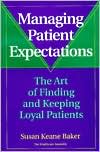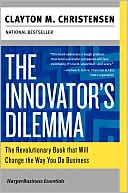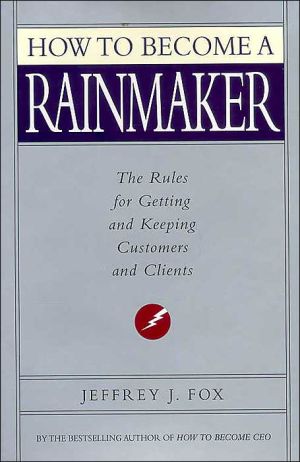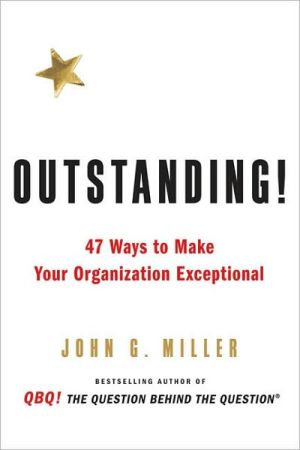Managing Patient Expectations: The Art of Finding and Keeping Loyal Patients
Satisfied patients refer, dissatisfied patients deter. Patient retention, referrals, and the personal rewards of medicine are all closely linked to quality relationships developed with patients. Patients value experiences in which their unique preferences are identified and respected. When these preferences are realistic, successful organizations find ways to remember and honor them. But even when unrealistic, a patient's preferences must be managed in a way that preserves and improves the...
Search in google:
Strategies for Building Satisfying Patient Relationships New England Healthcare Assembly This book fills a huge void in the areas of medical education and the delivery of patient service. The clear advice about how to identify and respond to patient needs and preferences is essential reading for physicians and those who work with them. If the personal rewards of medicine are important to you, read this book. --Joseph A. Lieberman, III, chairman, department of family and community medicine, clinical professor of family medicine, Thomas Jefferson University This important resource describes how to develop the qualities of understanding, empathy, and compassion that help to meet and exceed patient expectations. Managing Patient Expectations is filled with realistic and cost-effective strategies for maintaining patient satisfaction, creating loyalty, and increasing referrals. Susan Keane Baker explains how to find out what patients really think and how physicians can best respond in a variety of situations. Co-published with the Healthcare Assembly Press. James E. Casanova This is a concise, easy-to-read survey of techniques to attract new patients and instill loyalty and satisfaction in established patients. It contains examples of improved customer satisfaction from healthcare organizations as well as other service industries. Satisfied patients are more compliant, more enjoyable to work with, less litigious, and better for the bottom line. The author's purpose is to remind us of these facts and suggest specific actions to make patient satisfaction a reality. This subject matter has always been important, but more so now in the age of managed care, time constraints, and impersonal healthcare delivery systems. The book achieves its purpose, with some chapters more helpful than others. The preface indicates that the book has been written for a diverse audience including physicians, clinic staff, case managers, risk managers, non-physician clinicians, health system leaders, and those interested in patient outcomes measurement. The author is well informed and organized. The book is organized into five parts that progress in a logical sequence. The reader is first exposed to creating and identifying patient expectations, and then how to manage them. Finally there is a discussion of responding to unmet expectations and how to exceed expectations. Particularly helpful chapters address first impressions, listening skills, and ""moments of truth"" when a provider has the chance to ""make or break"" the relationship with a given patient. Other useful topics include the development of patient-oriented clinical guidelines, and the importance of a clear, concise bill. This is a worthwhile book for everyone who has contact with patients. Although much ofwhat is discussed is not really new, we need to be reminded of the importance of these issues again and again. The message is that patients' expectations are not set in stone but are dynamic personal issues that can be influenced and managed by successful providers. The book is similar to Improving Patient Satisfaction Now, (Aspen, 1997). Either book could be used as a catalyst for efforts to improve customer satisfaction in the healthcare setting.
PrefaceThe Author1Introduction1Pt. 1Creating Expectations2Prior Experiences73Word of Mouth174Advertising, Media, and Managed Care335First Impressions47Pt. 2Identifying Expectations6Listening Skills717Patient Feedback85Pt. 3Managing Patient Expectations8Moments of Truth1059Staff Strategies11710Informed Consent13511Patient Education14312Best Practices151Pt. 4Responding to Unmet Expectations13Complaints16914Patient Follow-Through20115Adverse Patient Outcomes21316When Patients Leave223Pt. 5Exceeding Expectations17Respecting Patient Preferences23518Building Loyal Relationships243References261Index271
\ From The CriticsReviewer: James E. Casanova, MD(Medical College of Wisconsin)\ Description: This is a concise, easy-to-read survey of techniques to attract new patients and instill loyalty and satisfaction in established patients. It contains examples of improved customer satisfaction from healthcare organizations as well as other service industries.\ Purpose: Satisfied patients are more compliant, more enjoyable to work with, less litigious, and better for the bottom line. The author's purpose is to remind us of these facts and suggest specific actions to make patient satisfaction a reality. This subject matter has always been important, but more so now in the age of managed care, time constraints, and impersonal healthcare delivery systems. The book achieves its purpose, with some chapters more helpful than others.\ Audience: The preface indicates that the book has been written for a diverse audience including physicians, clinic staff, case managers, risk managers, non-physician clinicians, health system leaders, and those interested in patient outcomes measurement. The author is well informed and organized.\ Features: The book is organized into five parts that progress in a logical sequence. The reader is first exposed to creating and identifying patient expectations, and then how to manage them. Finally there is a discussion of responding to unmet expectations and how to exceed expectations. Particularly helpful chapters address first impressions, listening skills, and "moments of truth" when a provider has the chance to "make or break" the relationship with a given patient. Other useful topics include the development of patient-oriented clinical guidelines, and the importance of a clear, concise bill.\ Assessment: This is a worthwhile book for everyone who has contact with patients. Although much of what is discussed is not really new, we need to be reminded of the importance of these issues again and again. The message is that patients' expectations are not set in stone but are dynamic personal issues that can be influenced and managed by successful providers. The book is similar to Improving Patient Satisfaction Now, (Aspen, 1997). Either book could be used as a catalyst for efforts to improve customer satisfaction in the healthcare setting.\ \ \ \ \ James E. CasanovaThis is a concise, easy-to-read survey of techniques to attract new patients and instill loyalty and satisfaction in established patients. It contains examples of improved customer satisfaction from healthcare organizations as well as other service industries. Satisfied patients are more compliant, more enjoyable to work with, less litigious, and better for the bottom line. The author's purpose is to remind us of these facts and suggest specific actions to make patient satisfaction a reality. This subject matter has always been important, but more so now in the age of managed care, time constraints, and impersonal healthcare delivery systems. The book achieves its purpose, with some chapters more helpful than others. The preface indicates that the book has been written for a diverse audience including physicians, clinic staff, case managers, risk managers, non-physician clinicians, health system leaders, and those interested in patient outcomes measurement. The author is well informed and organized. The book is organized into five parts that progress in a logical sequence. The reader is first exposed to creating and identifying patient expectations, and then how to manage them. Finally there is a discussion of responding to unmet expectations and how to exceed expectations. Particularly helpful chapters address first impressions, listening skills, and ""moments of truth"" when a provider has the chance to ""make or break"" the relationship with a given patient. Other useful topics include the development of patient-oriented clinical guidelines, and the importance of a clear, concise bill. This is a worthwhile book for everyone who has contact with patients. Although much ofwhat is discussed is not really new, we need to be reminded of the importance of these issues again and again. The message is that patients' expectations are not set in stone but are dynamic personal issues that can be influenced and managed by successful providers. The book is similar to Improving Patient Satisfaction Now, (Aspen, 1997). Either book could be used as a catalyst for efforts to improve customer satisfaction in the healthcare setting.\ \ \ BooknewsExplains that patient retention, referrals that bring in new patients, and the personal rewards of medicine are all closely linked to developing quality relationships with patients. Describes how to develop the qualities of understanding, empathy, and compassion and how to recognize and remember the unique preferences of each patient and at least to manage those that cannot be satisfied. Annotation c. by Book News, Inc., Portland, Or.\ \ \ \ \ 3 Stars from Doody\ \








